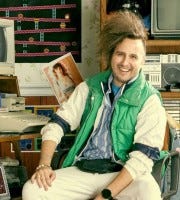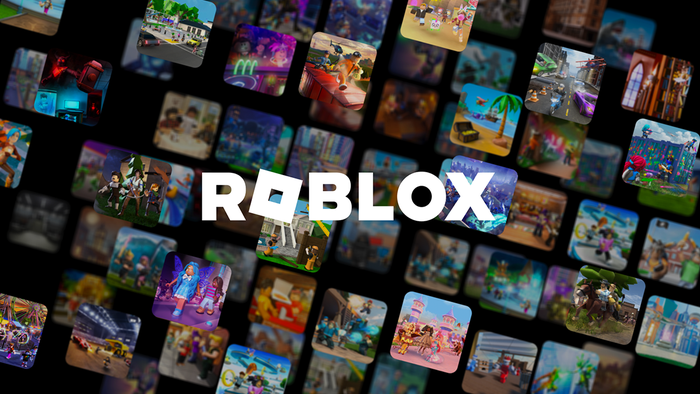Why we need a Phil Fish in Indie Games
Drawing parallels from art history and criticism, this post looks at the BlowFish incident and the vacuum left in the wake of Phil Fish's disappearance from the Indie community.

|
Phil Fish. Image from www.giantbomb.com. |
In every contemporary Art movement, there was at least one defining person that was the face to the masses. A rallying point to get behind and a voice in mainstream culture. Paul Cezanne was the Father of Modern Art. Pablo Picasso was the flamboyant proponent of cubism and abstraction. Clement Greenberg and Jackson Pollack for Abstract Expressionism, and Andy Warhol for Pop Art. Each time a genre emerged that countered the institutionalized system, you can point a finger to the artist who defined the movement, and (usually) the critic who justified their new style and placed it within the evolutionary process of Art.
I am going to suspend the argument of whether games are Art for this article, and just look at the parallel between artists and the academics who defended them and popular movements within games. You have Nolan Bushnell of Atari and Steve Wozniak of Apple. Tod Frye received the most success during this time with his Atari port of Pac-Man for the Atari 2600. If you have ever seen "Once Upon Atari", he is clearly the most vocal person about his time there. The 1984 crash of video games gave rise to Shingeru Miyamoto and Hironobu Sakaguchi, who is still an influence to this day. Shingeru Miyamoto is oftentimes considered the "Father of the Modern Video Game", having created entire genres of games. His success with Mario and Zelda, and the reintroduction of the home console with the Nintendo Entertainment System brought back customer faith in the quality of home consoles and the games produced for them. At this time there was the growing popularity of games for computers, and John Romero and John Carmack dominated the space with Doom, and in turn created the First Person Shooter genre. Then there is of course Will Wright, creator of The Sims and Spore. All of these people are credited with altering the way we see and play games. But these people are the inventors of movements, and are also usually the face of their genre.
We live in such an age in which we can still shake hands with the creators of video games and ask about their experiences and opinions on contemporary game design and the future of the industry. Miyamoto created the Pikmin series, and he still has direct control over the production of the various series which he created. Interviewers still sit down with Mr. Sakaguchi and ask about his opinion about the current Final Fantasy games. Personally, I shook hands with created of Tennis for Two. I got to sit in the audience while a child, no older than 12 or 13, went onstage at Video Games Live in New Orleans and beat William Higinbotham at pong.
|
Mr. Higinbotham after Video Games Live in New Orleans, 2010. |
So what about more contemporary games and their movements? The era of big console games saw the rise of Cliff Bleszinski, game designer at Epic Games and the creator of the Gears of War series. He's incredibly outspoken, with a boisterous personality and is very popular on Twitter. His games are larger-than-life: Gears of War features hulk-y, muscular men kicking alien ass with chainsaws mounted to machine guns. His games coincide with an era of consoles that are competing for consumer support with a "Bigger and Better" mentality. More things going on on-screen: better graphics, more explosions, more realism. He is the face of console games. Microsoft supports him because his philosophy on games falls in line with what they can promote with their consoles, better graphics and more heroes. Call of Duty, Gears of War, and Halo all fall into this kind of fantasy of power. You are a lone (male, muscular, and usually white) soldier with super-human abilities and capable of taking anything that gets thrown your way. Peter Molyneux, in contrast, also has achieved success but through his constant questioning of what it means to play and to be interactive in a digital space. Fable was the first original, commercially successful game to give the player choice with real, story-telling consequences that are also reflected in the way others perceive your character in a 3D landscape. Not only would the avatar take on different colors and shapes (growing devil horns, or a halo), but NPCs would actively cheer or cower away from you as you played.1
Where Cliff is the outspoken, in-your-face personality of the console generation, Mr. Molyneux is the academic. You need both to legitimize a movement. In 1952, Robert Rauschenberg wrote The American Action Painter and heavily criticized the Abstract Expressionists, calling them painters instead of artists, and wrote that they only cared for the selfish act of painting and disregarded all of the formal qualities of Art. It was not until Clement Greenberg and his essay, Modernist Painting, that Abstract Expressionism gained acceptance as Art. He looked at the same artists and saw nothing but formal qualities, and the rejection of anything that cannot be an intrinsic property of painting (representation, dimension, and texture are a few examples). The academic in turn justifies and places the contemporary counter-culture into historical context. The actions of the revolutionary, in this case Cliff Bleszinsky would be the Pollack with Peter Molyneux as the academic.
Given the recent "Blowfish" controversy, and Phil Fish supposedly quitting video games, it is interesting to note Beer's combination of the two key players in the independent games scene. Phil Fish is known for being outspoken, firing off quips and criticisms at gamers and the games industry as a whole. He even heavily criticized Microsoft for being unable to patch Fez on the 360 and for the more recent Xbox One treatment towards Indies. Johnathan Blow is very quiet and reserved after the success of Braid, and in his interview on Indie Game: The Movie he gets very philosophical on the nature of games and the storytelling possibilities that interactive media possesses.
Marcus Beer's singling out of these two people, as well as the media's confidence in their opinions as to ask them about the future of indie console development, institutionalizes them as the representation of the larger indie game development community. Now, with Fish's retreat from games, there is a loss of voice for a community that already has issues with getting the attention of media and the public. Without somebody there for the media to turn to for a quote or opinion, popular media and large corporations are free to write what they want about indies, without rebuke. It is unfair to place an umbrella over all independent game developers, and many of us often have varied and differing opinions about design, development, and the role of games. But without a personality, and an academic to back him or her up, we lose the power to have a say in mainstream culture about our works. There has to be a Pollack to every Greenberg, and so there needs to be a new personality to fill the role as speaker for Independent game developers.
1. I am aware that the Knights of the Old Republic series came out at approximately the same time. I do not mention it because it uses very similar mechanics to its pen-and-paper counterpart and is uses the Star Wars liscense. Fable is also different in that the gameplay was more action-based than RPG, and merged two gameplay styles together well.
Read more about:
BlogsAbout the Author(s)
You May Also Like











